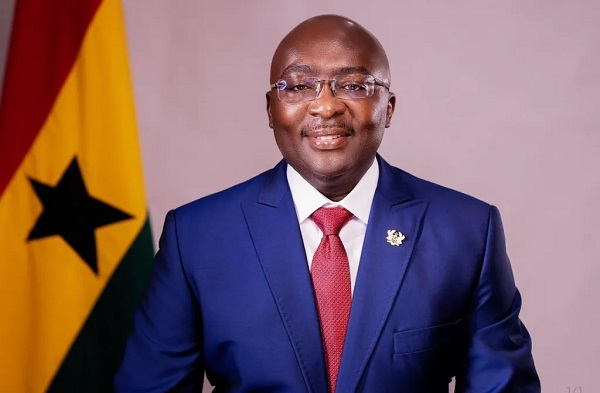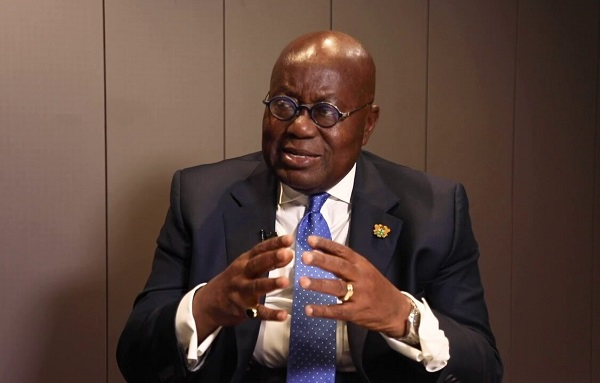News Not Found | AI News
Autonomous Deliveries Hit the Road
Last updated:

Edited By
Mackenzie Ferguson
AI Tools Researcher & Implementation Consultant
In a groundbreaking achievement, Tesla has completed the world's first autonomous vehicle delivery, as a Tesla Model Y drove itself from the Gigafactory in Austin to a customer's home. The self-driving car navigated highways and city streets at speeds up to 115 km/h without any human intervention, marking a significant leap in AI technology. Celebrated by Elon Musk, this feat showcases Tesla's advancements but also raises questions and optimism about the future of transportation.
Tesla's latest achievement in the realm of autonomous vehicle technology marks a groundbreaking moment in automotive history. The company successfully completed the world's first autonomous vehicle delivery, a feat that saw a Model Y autonomously driving itself from Tesla's Gigafactory in Austin, Texas, to its new owner's residence. This extraordinary event was not only a testament to the cutting-edge capabilities of Tesla's Full Self-Driving (FSD) technology, but also highlighted the potential future of automotive delivery services. During its autonomous journey, the Model Y expertly navigated various challenges including highways, intersections, and city streets, all without human intervention, and reached a top speed of 115 km/h.
The successful autonomous delivery has stirred waves across the industry and among technology enthusiasts alike. Tesla's CEO, Elon Musk, celebrated this milestone with great enthusiasm, emphasizing its importance as a world's first in autonomous vehicle technology. This achievement also adds a significant chapter to Tesla's narrative of innovation and leadership in the autonomous driving sector, offering a glimpse into a future where vehicles operate independently, enhancing both convenience and safety for users. While it's uncertain if autonomous deliveries will become a routine offering, this development certainly paves the way for broader implementation of such technologies.
Despite the excitement surrounding Tesla's achievement, it has also ignited discussions on both the efficacy and safety of fully autonomous systems. Critics have been vocal about the challenges that still lie ahead, referencing the need for more robust safety measures and transparency in how autonomous systems are tested and deployed. As Tesla continues to refine its technologies, it must address these concerns head-on to ensure public trust and acceptance.
Moreover, Tesla's venture into autonomous vehicle technology extends beyond deliveries. The company is actively working on a robotaxi service within Austin and is exploring the development of humanoid robots, envisioned to play integral roles in customer service and beyond. With competitors like Waymo also making strides in this field, Tesla's advancements are watched closely by both skeptics and supporters.
The implications of this autonomous delivery extend across economic, social, and political spheres. Economically, Tesla could potentially reduce vehicle delivery costs by eliminating the need for human drivers, thus lowering prices for consumers. Socially, the shift could lead to job displacement in transportation and logistics sectors, necessitating strategic planning and policy-making to mitigate any adverse effects. Politically, the success of Tesla's delivery underscores the importance of creating consistent regulatory frameworks that can adapt to the rapid evolution of autonomous vehicle technologies, ensuring both innovation and public safety.
The Tesla Model Y's autonomous journey from the Gigafactory to a customer's doorstep signifies a landmark achievement in the realm of self-driving vehicles. The vehicle's trip began at Tesla's Gigafactory in Austin, Texas, and successfully concluded at a customer's home, all while driving autonomously for approximately 30 minutes. This test of Tesla's Full Self-Driving (FSD) technology was celebrated by Tesla CEO Elon Musk; he called it a 'world's first,' marking a pivotal moment in automotive history. The drive, which reached speeds as high as 115 km/h, demonstrated Tesla's confidence in their developing technology that navigates highways, intersections, traffic signals, and city streets without any human input or remote oversight, as reported by a recent news article.
This significant achievement underscores the potential of autonomous vehicles in reshaping the logistics and transportation sectors. Tesla's successful delivery hints at a future where vehicles can handle their logistics with zero need for human drivers, potentially reducing costs associated with human labor. However, whether Tesla will offer autonomous deliveries as a regular service remains unclear. The technology continues to face scrutiny and requires extensive testing to meet safety and regulatory standards. Critics, like those from Electrek.co, have pointed out concerns regarding the route used for the delivery being pre-mapped or remotely monitored, which raises questions about whether the car was truly unsupervised .
Tesla's future goals are ambitious, including plans to roll out a broad-scale robotaxi service and the development of a humanoid robot, Optimus. Nevertheless, other players in the field, such as Waymo, are also advancing robustly, leveraging their multi-sensor approaches for full autonomy. Despite criticisms over sensor redundancy in Tesla's system, the broader vision for autonomous technology continues to push forward vigorously. This autonomous delivery is a step forward in the narrative, suggesting shifts in economics tied to vehicle logistics cost reductions and changes in public perceptions of self-driving technology . Furthermore, reactions to Tesla's robotaxi trials in Austin have been mixed, revealing excitement about the technological leap, floated by skepticism concerning its safety and reliability .
Beyond technology and business implications, there are significant social and political questions rising alongside Tesla's autonomous initiatives. The specter of job displacement looms, threatening traditional roles in transportation and logistics while pressing for adaptive workforce retraining solutions. Social equity issues also surface, as the accessibility of such autonomous services may widen the gap if they remain unaffordable or inaccessible to significant portions of the public. Political challenges loom as well, particularly as Tesla and other companies push boundaries within currently vague regulatory environments, highlighting the pressing necessity for clear, adaptable legal frameworks. Such frameworks are vital for accommodating the fast-evolving nature of autonomous vehicle technology and ensuring that it integrates into society responsibly and safely .
Elon Musk's strategic decisions continue to shape Tesla's endeavors, with the autonomous delivery serving as a testament to Tesla's ambition and innovation. Despite the mixed public reaction to this milestone, which ranges from sheer enthusiasm to skepticism, the autonomous Model Y delivery undeniably sets a precedent for future applications of AI in everyday life. It highlights both possibilities and responsibilities that come with revolutionary technology. As Tesla addresses these challenges, from technical hurdles to regulatory navigation, the success or failure of such technologies in gaining widespread acceptance may well dictate the next chapter in the ongoing shift toward a more automated world .
Tesla's recent breakthrough in autonomous vehicle technology marks a pivotal moment in transportation innovation. The company's latest achievement involves the successful self-driving delivery of a Tesla Model Y from the Gigafactory in Austin, Texas, to a customer's residence. Notably, the vehicle navigated this journey entirely on its own, maneuvering through complex road scenarios, traffic signals, and urban settings without any human intervention . This milestone underscores Tesla's commitment to advancing autonomous driving technologies, showcasing its Full Self-Driving (FSD) system's capabilities in real-world conditions.
The technical prowess of Tesla's autonomous capabilities was demonstrated as the Model Y reached up to 115 km/h autonomously without a safety driver onboard or remote monitoring. This illustrates the sophistication and potential of Tesla's FSD technology, which is continually evolving to enhance safety and efficiency on the road . Although this specific delivery might remain an occasional occurrence as Tesla refines its systems, it sets an optimistic precedent for future autonomous vehicle operations and logistics innovations.
In addition to groundbreaking deliveries, Tesla is ambitiously working on other autonomous projects, such as its robotaxi service currently under testing in Austin. This service represents a revolutionary concept where vehicles operate as taxis without drivers, aiming to reduce costs and increase convenience for users. Moreover, Tesla is also venturing into the realm of humanoid robots with "Optimus," intending to integrate AI into various facets of daily life, from domestic chores to industry-level tasks . Such advancements reflect Tesla's broader vision of integrating autonomy into technology for societal benefit.
Elon Musk's reaction to the autonomous delivery of a Tesla Model Y was characterized by both excitement and eagerness to showcase this milestone as a significant achievement in automotive technology. Musk took to social media, specifically X, to highlight the historic nature of the event, expressing enthusiasm for what he deemed a "world's first" in the realm of autonomous vehicle delivery. This accomplishment underscores his longstanding ambition to push the boundaries of autonomous driving, a vision he has repeatedly emphasized as a critical objective for Tesla's future growth and innovation trajectory.
Public reception of the autonomous delivery has been mixed, reflecting both admiration and skepticism. Many applauded Tesla's technological prowess and foresight, seeing the event as a leap forward in AI and self-driving car capabilities. However, others raised concerns about the validity of the "fully autonomous" label, questioning the transparency of Tesla's methods and the practicality of such technology for everyday use. Such skepticism was somewhat mitigated by the release of a 30-minute video showcasing the Model Y's journey, which Tesla hoped would allay doubts and quell critics.
Public and expert opinions were divided, with some experts expressing optimism about the future potential of Tesla's Full Self-Driving system, while others remained cautious. Publications like Business Insider highlighted the technological milestone but cautioned that the technology is not yet ready for unsupervised use on broader scales. Meanwhile, critics from Electrek.co questioned whether the route was pre-mapped and the lack of transparency surrounding the event, particularly when compared to competitors like Waymo who utilize a multi-sensor approach for safety. This difference reinforces the ongoing debate regarding the safety and viability of Tesla’s strategy in the ever-evolving landscape of autonomous driving technologies.
In the realm of autonomous vehicle technology, Tesla's recent achievement of the world's first autonomous vehicle delivery has set a new precedent. However, when compared to competitors like Waymo, Tesla's approach exhibits both strengths and potential pitfalls. Tesla's self-driving technology, which successfully delivered a Model Y from a factory to a customer's doorstep without human intervention, marks a significant technical advancement. Yet, as noted by critics, including Electrek.co, Tesla's system relies heavily on AI and lacks the multi-sensor support found in other systems like Waymo's, potentially impacting safety and reliability.
Waymo, an established player in the autonomous driving arena, continues to make strides with its fully driverless vehicles, which have been operational for over a year on highways in select cities. This approach by Waymo, extensively tested and equipped with a robust multi-sensor system, stands out for its emphasis on safety and precision. As Tesla and Waymo compete in this futuristic landscape, questions about each company's methodologies and technological reliability naturally arise. Tesla's bold reliance on its Full Self-Driving (FSD) software contrasts with Waymo's more cautious, sensor-reliant strategy.
Tesla's Fully Self-Driving (FSD) system, which recently garnered attention with its first autonomous vehicle delivery, faces significant challenges and criticism. While Elon Musk celebrated the Model Y's self-directed journey from Tesla's Gigafactory in Austin to a customer's home ([NDTV](https://www.ndtv.com/world-news/video-shows-tesla-driving-itself-to-new-owners-home-elon-musk-reacts-8790136)), experts and the public have expressed skepticism about the safety and reliability of Tesla's FSD technology ([Engadget](https://www.engadget.com/transportation/tesla-shows-off-its-first-fully-autonomous-delivery-to-convince-us-its-self-driving-cars-work-163805707.html)). Concerns center on the system's lack of sensor redundancy and the potential for unpredictable behavior in complex driving environments, elements that are often highlighted in competitive analyses that compare Tesla to companies like Waymo ([AInvest](https://opentools.ai/news/tesla-claims-first-of-its-kind-a-fully-autonomous-car-delivery-from-factory-to-home)).
In addition to technical scrutiny, Tesla's FSD system is embroiled in regulatory and transparency issues. Critics argue that Tesla's promises of "fully autonomous" capabilities are misleading, given the current state of technology and existing road safety regulations ([Electrek](https://opentools.ai/news/teslas-model-y-autonomously-makes-historydrives-itself-home)). The lack of rigorous, independent testing and the reliance on software updates to address critical safety issues have further fueled skepticism. Industry watchers emphasize that consistent, transparent communication from Tesla is needed to reassure both regulators and the public about the safety of its autonomous driving technology ([Business Insider](https://opentools.ai/news/tesla-claims-first-of-its-kind-a-fully-autonomous-car-delivery-from-factory-to-home)).
Public reaction to Tesla's FSD achievements has been mixed, balancing excitement with caution. While some view the autonomous delivery as a significant technological milestone, others are wary of potential safety issues, particularly in light of reports on safety incidents involving Tesla's robotaxi services ([The Verge](https://www.theverge.com/news/694801/tesla-autonomous-delivery-factory-customer-robotaxi)). Social media discussions reflect a range of opinions, from admiration of Tesla's innovations to apprehensions about the broader implications for job security and vehicle safety ([Teslarati](https://www.teslarati.com/tesla-silences-fsd-critics-full-video-model-y-driving-itself-to-customer/)).
As Tesla moves forward with its autonomous ambitions, the company is simultaneously navigating significant financial challenges. Analyses suggest that while autonomous technologies promise future profitability, the current high costs associated with developing and maintaining these systems are substantial ([Teslarati](https://www.teslarati.com/tesla-silences-fsd-critics-full-video-model-y-driving-itself-to-customer/)). Financial analysts point out the gap between Tesla’s ambitious revenue projections and the immediate burdens of technological expenditures, raising questions about the sustainability of its autonomous projects ([OpenTools](https://opentools.ai/news/teslas-model-y-autonomously-makes-historydrives-itself-home)).
The successful autonomous delivery of a Tesla Model Y not only marks a significant technological milestone but also brings forth a plethora of economic implications. By eliminating the need for human drivers, automotive companies like Tesla could substantially reduce logistical costs, potentially lowering vehicle prices for consumers. This advancement might give Tesla a competitive edge in the electric vehicle market, incentivizing further innovation and efficiency within the industry. Moreover, as the technology matures, the reduction in delivery costs could translate into higher profitability and investment in research and development, further driving the evolution of autonomous technologies. However, this transition could also necessitate strategic considerations like infrastructure investments to support and scale autonomous deliveries effectively.
The shift towards autonomous deliveries prompts a re-evaluation of social structures, particularly concerning employment in transportation and logistics sectors. The automation of driving tasks might result in substantial job displacement, particularly affecting those whose livelihoods depend on driving. This societal challenge underscores the need for retraining programs and social safety nets to facilitate workforce transition to new roles created by technological advancements. Failing to address these social concerns could exacerbate existing inequalities, especially in regions highly dependent on logistics jobs. Moreover, ensuring equitable access to autonomous vehicle services becomes crucial to prevent further social divides, making social policy interventions equally important as technological ones.
Politically, the emergence of autonomous deliveries highlights the necessity for coherent and adaptable regulatory frameworks. Currently, regulatory discrepancies exist across different regions, with some areas like Texas offering more lenient guidelines that attract companies interested in testing new technologies. The Model Y's delivery could accelerate discussions at the governmental level to establish uniform standards that ensure safety and reliability, while also fostering innovation. These regulations must address not only the operational aspects of autonomous vehicles but also issues related to data privacy and security, which are paramount in the growing digital age. As regulators work to catch up with rapid technological advances, comprehensive policies could set a global precedent for autonomous vehicle governance.
Tesla's foray into the realm of autonomous technology extends beyond its ambitious vehicle self-driving projects to include groundbreaking advancements in robotaxi services. This venture aims to revolutionize urban transportation by offering fleets of electric vehicles capable of navigating city streets without a human at the wheel. Tesla has commenced testing its robotaxi service in Austin, Texas, showcasing its Full Self-Driving (FSD) capabilities. While this promises to be a transformative leap in public transportation, the rollout has not been without challenges. Reports of abrupt lane changes and unsatisfactory braking have emerged, prompting regulatory scrutiny from entities such as the National Highway Traffic Safety Administration (NHTSA) .
In parallel, Tesla's development of humanoid robots, known as Optimus, represents an ambitious attempt to bring advanced robotics into everyday life. These robots, designed to perform human-like tasks, are meant to integrate seamlessly into homes and workplaces. This initiative not only signals Tesla's diversification in the autonomous technology sector but also stirs public discourse about the ethical and social implications of deploying such technology. With Elon Musk at the helm, Tesla envisions a future where AI-driven robots complement human tasks, ultimately enhancing productivity and economic efficiency . However, the introduction of humanoid robots has also sparked concerns about potential job displacement in sectors heavily reliant on manual labor. Thus, while Tesla pushes forward with these innovations, it also underscores the importance of establishing ethical and equitable frameworks to guide the responsible deployment of AI technologies in society.
Electrek.co, a well-regarded media outlet for electric vehicle news, has taken a skeptical view of Tesla's recent autonomous vehicle delivery. Despite the company billing the event as a fully autonomous achievement, Electrek.co suggests this claim may be more complicated than it appears. Questions are raised about the potential pre-mapping of the route or remote monitoring, arguing that such measures would undermine the claim of complete autonomy. In their analysis, they stress the need for transparency about Tesla's testing and monitoring processes. Electrek.co also draws comparisons with companies like Waymo, noting that its multi-sensor strategy, including LiDAR, often results in a more robust safety net for autonomous driving. This skepticism offers a valuable counter-narrative to the mainstream excitement surrounding Tesla's advancements in autonomous technology.
AInvest.com has provided an intriguing competitive analysis focused on the implications of Tesla's recent autonomous delivery by comparing it with that of its competitor, Waymo. Although Tesla's achievement of a self-driving car embarking on a delivery caught the world's attention, AInvest.com argues that Tesla might still lag in technological robustness when compared to Waymo's offerings. The analysis emphasizes Waymo's superior use of multispectral sensors that enhance object detection and navigational accuracy. AInvest.com's assessment posits that Tesla's reliance on more limited sensor technology could pose risks under complex driving situations, suggesting that while groundbreaking, Tesla's approach might not be the safest course during its current phase of development.
Business Insider has approached Tesla's autonomous delivery with cautious optimism, acknowledging both the significance and the limitations of the event. According to their perspective, this milestone is undeniably an impressive demonstration of automotive technology but should not yet be considered indicative of Tesla's readiness for broad deployment of unsupervised vehicles. The publication highlights the need for rigorous development cycles and more expansive testing to ensure the safety and reliability of such technology on a larger scale. Additionally, Business Insider points to the existing regulatory environment, which poses considerable hurdles that Tesla must navigate before these autonomous systems can be widely accepted and utilized. The cautious tone reflects a broader industry sentiment of balancing innovation with safety and regulation.
Tesla's groundbreaking achievement with the first autonomous vehicle delivery signifies a pivotal moment in the evolution of transportation technology. As a Model Y navigates the intricate web of city streets, highways, and intersections without human intervention, a glimpse into the potential future of autonomous logistics comes into view. While Tesla has yet to confirm whether such deliveries will become a standard practice, the event unmistakably lays the foundation for more widespread adoption of autonomous technologies in vehicle delivery and beyond. The strategic advantage of removing the human element from delivery logistics not only reduces costs but also enhances efficiency, which could lower consumer prices and boost profit margins for Tesla.
However, alongside these promising prospects comes a multitude of challenges. The skepticism surrounding Tesla's Full Self-Driving (FSD) system remains notable, with concerns being voiced about its safety and reliability. Critics, such as those from reputable platforms like Business Insider, caution that although this delivery signals a technological leap, the transition to a future populated by self-driving cars requires meticulous testing and stringent regulation. Moreover, as Tesla advances in its autonomous ventures, including the development of Optimus humanoid robots and the Austin-based robotaxi service, public trust must be carefully nurtured.
Further complicating the future landscape of autonomous vehicle deliveries are the economic, social, and political ramifications that accompany this innovation. On the economic front, autonomous vehicles promise to revolutionize the logistics sector by substantially reducing operational costs. However, this innovation raises the specter of job displacement within the transportation workforce, necessitating robust retraining and reskilling initiatives to support affected individuals. On a broader social level, the equitable distribution of benefits from autonomous vehicle technologies is imperative to prevent widening societal inequities. Politically, the dearth of unified regulations for autonomous vehicles calls for urgent action to create comprehensive legal frameworks that can keep pace with technological advancements, ensuring safety and fairness across the board. Tesla’s choice of navigating its service through Texas, with its looser regulatory environment, underscores the necessity for adaptable and forward-thinking policies that can facilitate the mainstream rollout of such innovations.













